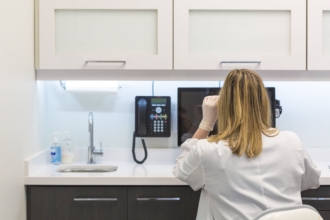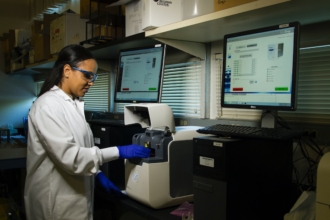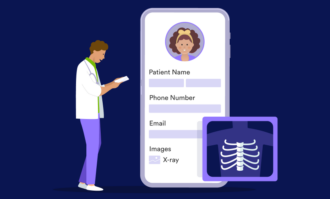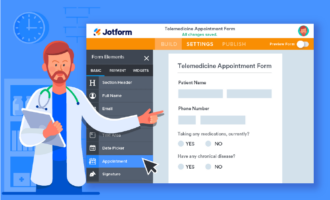Telehealth, including telenursing, has been on the rise in recent years. An aging population, coupled with greater acceptance of medical care delivered remotely, has created demand for these services. According to the Business Insider Intelligence Insurance Technology Study, 57 percent of consumers would use telemedicine services if they were available.
Since the coronavirus pandemic began, more people and healthcare organizations have gravitated toward telemedicine to prevent the spread of the disease. Some states, like Texas, have fast-tracked temporary licensing of out-of-state nurses so that they can help respond to the pandemic by providing telenursing services to Texas patients.
Just so you know
You’ve got your medical toolkit ready to help those in need — but what about your telemedicine toolkit? With Jotform’s HIPAA-friendly telehealth platform, you can easily create online medical forms that keep sensitive health data safe.
How to define telenursing
Like telemedicine, telenursing is defined as nursing services provided through an electronic platform. This includes phone calls, video conferencing, and remote monitoring through devices like Bluetooth-connected blood pressure monitors. Telenursing services include teaching, consultations, triage, and providing direct services to patients.
While there is no physical patient contact during a telenursing visit, the nurse still delivers medical care. The process of assessing, planning, and evaluating patient outcomes, as well as intervening when things aren’t going well, doesn’t change. It’s just how the care is delivered that’s different.
Telenurses can work for hospitals, health insurance companies, and other healthcare organizations.
Check it out…
Jotform offers HIPAA-friendly online forms for medical professionals. Collect e-signatures, consent forms, medical history, file uploads, payments, and more!
The basics of telenursing
In the early days of telenursing, a registered nurse (RN) would answer questions and triage patients over the telephone. For example, a patient would call the nurse and explain their symptoms, and the nurse would determine whether or not the patient needed to be seen in a clinical setting like a hospital or doctor’s office.
Telenursing is still used for triage today. You may not think about it, but when you call the doctor’s office and leave a voicemail message for the nurse about the sniffles your baby has, you’re initiating a telenursing visit. When the nurse calls you back to ask if the baby has a fever and if they’re eating, that’s triage via telenursing.
Advances in technology, including the internet, smartphones, remote monitoring devices, and electronic health records, have made it possible to expand telenursing beyond telephone triage. For example, in a telenursing visit for a minor burn, the nurse could teach the patient how to dress and care for the burn over a video call.
Pre- and postoperative care
One example of how telenursing is used with modern technology is for pre- and post-surgical care. During the pre-operative visit, the nurse can ask questions about the patient’s medical history and complete any assessments that don’t require a clinical setting.
After the operation, particularly if the patient lives in a rural area or doesn’t have transportation, telenursing can be used to monitor the patient at home. This can be as simple as the nurse calling the patient to ask about symptoms or as complicated as sending the patient home with a wearable device to monitor blood pressure, heart rate, and other vital signs.
Remote care for chronic conditions
Another way healthcare providers use telenursing is to remotely monitor patients with chronic conditions. In addition to conducting visits and assessments via video conferencing platforms, telenursing in these situations can mean using Bluetooth-connected devices like cardiac monitors and glucose monitors to review the patient’s status.
This type of remote care has actually been proven to be very effective. Patients in the U.K., for example, who were monitored remotely for diabetes, heart disease, and chronic lung disease experienced a 50 percent drop in the one-year mortality rate and an 18-percent decrease in hospitalizations.
Coordinating patient care
Telenursing is also used to coordinate patient care. A nurse can have a video conference with a specialist and then send patient records to them. For example, a nurse monitoring a patient remotely may notice erratic cardiac activity. The nurse, with the patient’s consent, would consult with a cardiologist and send the specialist the patient’s records so that they could provide the patient with further evaluation and treatment.
Just so you know
If your organization is fighting against COVID-19, you can apply for a free, unlimited, HIPAA-friendly Jotform account with our Coronavirus Responder Program.
For long-term care patients, the nurse serves as the point of contact for the patient as they navigate their way through the medical system. During remote monitoring sessions, the nurse is likely the person who picks up on the patient’s need for additional care and helps the patient obtain those services.
Telenursing has become an integral part of healthcare services today. As more providers try to serve patients in rural areas where there aren’t a lot of healthcare facilities, and more insurance companies reimburse for telehealth services, there will likely be more demand, even after the coronavirus pandemic subsides.
















































Send Comment:
1 Comments:
More than a year ago
Can an LVN/LPN do focus assessment via tel monitoring?